Similar presentations:
The physiological basis of work activity and exercise
1. The PHYSIOLOGICAL BASIS of WORK ACTIVITY and EXERSICE.
Lecture14 of a.prof.SAVKIN V.V.
1 & 2 PARTS
2. Physiological changes in the body during work
• are related to the type and nature of theactivity.
• Types of employment:
• Physical labor.
• Brainwork.
• Nervous and stressful work.
3. Physical labor
• is characterized by a load on the muscularsystem.
• * Varies in severity: light, medium, heavy,
and very heavy.
• * The severity of labor is determined by
energy costs.
4. The severity of labor characterizes
• only the physical component of labor andis determined by :
• 1.- energy expenditure of the body,
• 2.- the nature of labor movements,
• 3.- severity of vegetative shifts.
5. Energy costs depending
on the severity of physical labor are:
I-light labor - up to 2.5 kcal/min,
II-medium - 2.5 – 4.1 kcal/min,
III-heavy – 4.1 – 6.0 kcal/min,
IV-very heavy-more than 6.0 kcal/min.
6. Mental work is accompanied
• by emotional and motorcomponents.
7. Nervous and stressful work.
• It includes workwith a high degree
of danger or
responsibility for
the results of work.
8. The intensity of the work.
• Reflects the load on the Central Nervoussystem and is characterized by:
• 1. the volume of the perceived
information,
• 2. speed of changing parameters of
command signals,
• 3. state of analyzer systems,
• 4. expression of emotions,
• 5. the degree of attention tension.
9. Labor groups
• are classified according to the intensity ofattention:
• 1. based on the percentage of work
duration,
• 2. requiring concentration,
• 3. of the total duration of work.
10. Labor groups
The following groups are distinguished:
1. - non-strenuous work-up to 25%;
2. - low stress –up to 50%;
3.- intense – up to 75%;
4.- very stressful -more than 75%.
11. Work and performance.
• WORK is apurposeful activity
involving the use of
the neuromuscular
system or
neuropsychic activity.
12. PERFORMANCE
• is the potential or actual ability of a personto perform :
• 1. maximum possible amount of work,
• 2. with a certain quality,
• 3. for a given time.
13. Factors that determine performance.
• Internal:• 1. training,
• 2. the value of the functional reserves,
• 3. features of transport and metabolic
functions,
• 4. emotional background.
14. External Factors :
1. working conditions,
2. temperature,
3. illumination,
4. noise,
5. vibration,
6. air composition,
7. shift work,
8. mode of work and rest.
15. CHANGE IN HEALTH.
As a rule, performance fluctuates during theday, week, month, year. These
fluctuations are close to sinusoidal.
• Improving PERFORMANCE is carried out
by training coordination systems, as well
as processes of transport and metabolic
maintenance of activity.
16. PHYSICAL PERFORMANCE and WORKING RESULTS DURING THE HOUR, DAY(a), WEEK (b)
17. DETERMINATION OF PHYSICAL PERFORMANCE
18. 1. By minute oxygen consumption:
• A) Determines aerobic performance,• B) Gives an idea of internal respiration,
i.e., the work of the respiratory,
cardiovascular systems and tissue
respiration,
• C) the Indicator allows you to evaluate the
transport and metabolic support of
functions;
19. 2. By the amount of work for a certain time;
3.On indicators of
physiological systems in the
performance of labor
operations.
20. 4. Method of metered physical activity.
• A) Stargallery orPWC170- test
• (Full symbol is POWER
WORKING CAPACITY
170). IT allows you to
determine the potential
performance, provided
that the pulse of the
subject reaches 170 per
minute.
21. B) examination on the treadmill.
• This is runningon a track
driven by a
motor.
22. C) Bicycle Ergometry.
• When conducting such asurvey, the amount and
duration of the load is
dosed.
• CCC indicators are
studied: heart rate, blood
PRESSURE, and ECG is
continuously recorded.
• Oxygen consumption can
be quantified.
23. D) Measurement of muscle strength
• on adynamometer
(for different
muscle
groups).
24. PRINCIPLES for assessing MENTAL PERFORMANCE include:
• 1) determining the amount of short-termmemory;
• 2) determining the sustainability of
attention;
• 3) determining the productivity of mental
labor;
• 4) features of thinking.
25. TRAINING RULES.
• 1) more than 1/3 of the body's muscles aresubjected to stress;
• 2) it is necessary to dose loads by
intensity and duration;
• 3) the amount of loads should increase
gradually (by 2-5 %).
26. DYNAMICS OF EXPENDITURE AND RECOVERY OF ENERGY RESOURCES with SUPERCOMPENSATION
27. OPTIMALLY SELECTED TRAINING MODE:
• 1) ensure the economization of functions, evenat rest (↓ heart rate, respiratory rate, IOC, BP);
• 2) improves the integral indicators of the body:
appetite, sleep, mood;
• 3) there is a "cross" effect of adaptation, i.e.
immune responses are activated,
• 4) increases resistance to external temperature
fluctuations,
• 5) improves mental performance.
28. STAGES OF ADAPTATION TO WORK
• ADAPTATION is manifested in the form offorming a working dynamic stereotype,
i.e., memorizing the sequence of actions
of stimuli.
29. WORKING DYNAMIC STEREOTYPE
• Pavlov I.P. held that the interaction ofhigher organisms with the external
environment was based on the dynamic
stereotype, that is on the integration in
the cortical hemispheres of neural traces
coming from the external and internal
environments.
• Theory postulated the synthesis of
conditioned reflexes.
30.
• It is a system of reflexes, a newprogram, formed in the process of labor
activity.
• At the first stage, irradiation of excitation
occurs, an increase in the activity of all
functional systems.
• In the process of adaptation to work,
concentration takes place, a new
functional system is formed-a working
dynamic stereotype.
31.
• The working dynamic stereotype istriggered by an irritant (tools, object of
labor, situation).
• The implementation of actions on this
stereotype does not cause emotional
stress, does not require increased
attention.
32. FATIGUE
• is a temporary decrease in performancethat occurs after work.
• It disappears after a rest.
33. DEPENDING ON THE TYPE OF WORK,
THERE ARE TYPES OF FATIGUE:
1) physical fatigue;
2) touch ( in the analyzers);
3) mental. It is caused by a large amount
of information, a lack of time, and a degree
of creativity;
• 4) emotional.
34. FACTORS THAT AFFECT THE DEVELOPMENT OF FATIGUE.
• CRITERIA FOR FATIGUE:• 1.Objective, 2.Subjective.
35. OBJECTIVE CRITERIA
• are related to change:a) constants of the internal environment,
CNS indicators, and other physiological
systems ;
b) reflex time;
C) the nature of responses to tests, etc.
36. d) Electromyograms for fatigue
• 1. normal muscle• 2. fatigue muscle
37. SUBJECTIVE CRITERIA:
• a) Fatigue is a subjective psychosensory state.• It depends on the emotional support of the work
process (boredom leads to fatigue).
• It is manifested in the desire to stop working or
reduce the load.
• The feeling of fatigue is not necessarily
associated with the burden of work,
• b) Fatigue is accompanied by numbness of the
shoulders and neck.
• There are lower back pain, blunted vision.
38. THEORY OF FATIGUE
• 1) Information. Fatigue develops as a result ofimpaired perception, processing, and control
processes in analyzer systems.
• 2) Violation of power supply. Fatigue is caused
by a lack of macroergs and hypoxia, which
occurs due to a violation of the transport of O2 to
the working organs during prolonged work.
39. Regularities of fatigue development
• in departments of analyzer systems basedon information theory.
• 1) at the receptor level. It is associated
with a violation of the conditions for
generating the receptor potential (violation
of the ion channels).
40. 2) at the level of synaptic processes:
• a) decrease in the probability of releasingthe mediator during long-term synapse
operation;
• b) reduced sensitivity of postsynaptic
receptors;
• C) changes in the properties of synapse
esterases that destroy the mediator;
• d) violation of energy supply processes in
the synapse.
41. 3) at the level of the nerve centers.
• As a result of long-term work, the processof processing information, making the right
decision, and activating other centers is
disrupted.
• That is, the management process is
disrupted.
42. 4) fatigue may develop in the Executive body.
• For example, during physical work, thecomposition of the microenvironment and
the sensitivity of the muscles to control
signals changes, the response time slows
down, and the nature of the response itself
changes.
43. CHRONIC FATIGUE
• occurs if the recovery of the body'sresources after previous work has not
occurred, i.e. fatigue has become chronic.
• In this case, there is an overstrain of the
processes of regulation of functions.
• It is necessary to fight overwork, because
this leads to an increase in the incidence
of diseases, and a decrease in employee
performance.
44. Recovery of HEALTH occurs:
• 1.With passive rest,• 2. With active rest.
45. ACTIVITY OF SYSTEMS AIMED AT FIGHTING FATIGUE.
• 1. The development of fatigue largelydepends on the energy reserves, the
speed of their mobilization, the duration of
action and the power of energy sources.
46.
• 2. The development of fatigue ishindered:
• a) Increased blood flow and delivery of O2
to the organ using reserves of the
cardiovascular and respiratory systems;
• b) Increase the CAKE COOK in the
tissues;
• c) Increasing the body's resistance to
hypoxia.
47. 3. Coordination of transport and metabolic
support activities is carried out:1) sympathoadrenal system;
2) conditional and unconditional reflexes
first part END.
© SAVKIN V.V.at all.,PSMU,2020 ,1 & 2 parts
48. Sports Physiology Second Part:
49. Work and Sport Physiology
50. Sports Physiology
• In fact, if some of the extremes of exercise werecontinued for even moderately prolonged periods,
they might be lethal.
• Therefore, sports physiology is mainly a
discussion of the ultimate limits to which several of
the bodily mechanisms can be stressed.
• To give one simple example: In a person who has
extremely high fever approaching the level of
lethality, the body metabolism increases to about
100 percent above normal. By comparison, the
metabolism of the body during a marathon race
may increase to 2000 percent above normal.
51. Muscles in Exercise Strength, Power, and Endurance of Muscles
• The final common determinant of success inathletic events is what the muscles can do for youwhat strength they can give when it is needed,
what power they can achieve in the performance
of work, and how long they can continue their
activity.
• To give an example of muscle strength, a worldclass weight lifter might have a quadriceps muscle
with a cross-sectional area as great as 150 square
centimeters. This would translate into a maximal
contractile strength of 525 kilograms
52. The power of muscle contraction
• is different from muscle strength becausepower is a measure of the total amount of
work that the muscle performs in a unit period
of time.
• The maximal power achievable by all the
muscles in the body of a highly trained
athlete with all the muscles working together
is approximately the following: First 8 to 10
seconds=7000,
• Next 1 minute=4000;
• Next 30 minutes=1700 kg-m/min.
53. Another measure of muscle performance is endurance
• This, to a great extent, depends on thenutritive support for the muscle-more than
anything else on the amount of glycogen
that has been stored in the muscle before
the period of exercise.
• The amounts stored are approximately the
following:
• High-carbohydrate diet=40;
• Mixed diet=20;
• High-fat diet=6 g/kg muscle.
54. Muscle Metabolic Systems in Exercise
These systems are(1) the phosphocreatine-creatine system,
(2) the glycogen-lactic acid system, and
(3) the aerobic system.
The source of energy actually used to cause
muscle contraction is adenosine triphosphate
(ATP).
Each of these bonds stores 7300 calories of
energy per mole of ATP under standard
conditions
55.
• The amount of ATP present in the muscles,even in a well-trained athlete, is sufficient to
sustain maximal muscle power for only about
3 seconds, maybe enough for one half of a
50-meter dash.
• Therefore, except for a few seconds at a
time, it is essential that new ATP be formed
continuously, even during the performance of
short athletic events.
56.
The slide shows the three metabolicsystems that provide a continuous supply of
ATP in the muscle fibers.
57.
• 1. Phosphocreatine can easily provideenough energy to reconstitute the highenergy bond of ATP. Furthermore, most
muscle cells have two to four times as
much phosphocreatine as ATP.
• The energy from the phosphagen system
is used for maximal short bursts of muscle
power (8-10 s).
58. 2. Glycogen-Lactic Acid System
• The stored glycogen in muscle can be split intoglucose and the glucose then used for energy.
The initial stage of this process, called glycolysis,
occurs without use of oxygen and, therefore, is
said to be anaerobic metabolism (Energy is
released to form four ATP molecules for each
original glucose molecule, then it is transformed to
lactic acid).
• Under optimal conditions, the glycogen-lactic acid
system can provide 1.3 to 1.6 minutes of maximal
muscle activity
59. 3. Aerobic System
• The aerobic system is the oxidation offoodstuffs in the mitochondria to provide
energy.
• That are glucose, fatty acids, and amino
acids from the foodstuffs-after some
intermediate processing-combine with
oxygen to release tremendous amounts of
energy that are used to convert AMP and
ADP into ATP.
• Unlimited time (as long as nutrients last).
60. Recovery of the Muscle Metabolic Systems After Exercise
• And then energy from the oxidativemetabolism of the aerobic system can be
used to reconstitute all the other systems-the
ATP, the phosphocreatine, and the glycogenlactic acid system.
• Reconstitution of the lactic acid system
means mainly the removal of the excess
lactic acid that has accumulated in all the
fluids of the body. This is especially important
because lactic acid causes extreme fatigue.
61. Energy resources of skeletal muscle
62. Recovery of the Aerobic System After Exercise
• Even during the early stages of heavyexercise, a portion of one's aerobic energy
capability is depleted.
This results from two effects:
• 1) the so-called oxygen debt and
• 2) depletion of the glycogen stores of the
muscles.
63. Oxygen Debt
64. The body normally contains
• about 2 liters of stored oxygen that can be usedfor aerobic metabolism even without breathing any
new oxygen. This stored oxygen consists of the
following:
• (1) 0.5 liter in the air of the lungs,
• (2) 0.25 liter dissolved in the body fluids,
• (3) 1 liter combined with the hemoglobin of the
blood, and
• (4) 0.3 liter stored in the muscle fibers themselves,
combined mainly with myoglobin, an oxygenbinding chemical similar to hemoglobin.
65. In heavy exercise,
• almost all this stored oxygen is used within aminute or so for aerobic metabolism.
• Then, after the exercise is over, this stored
oxygen must be replenished by breathing
extra amounts of oxygen over and above the
normal requirements.
• In addition, about 9 liters more oxygen must
be consumed to provide for reconstituting
both the systems.
• All this extra oxygen that must be "repaid,"
about 11.5 liters, is called the oxygen debt.
66. Effect of Athletic Training on Muscles and Muscle Performance
• One of the cardinal principles of muscledevelopment during athletic training is the
following: Muscles that function under no
load, even if they are exercised for hours on
end, increase little in strength.
• At the other extreme, muscles that contract
at more than 50 percent maximal force of
contraction will develop strength rapidly even
if the contractions are performed only a few
times each day.
67. Importance of Maximal Resistance Training.
68.
• Along with this increase in strength is anapproximately equal percentage increase in
muscle mass, which is called muscle
hypertrophy.
• In old age, many people become so
sedentary that their muscles atrophy
tremendously.
• In these instances, muscle training often
increases muscle strength more than 100
percent.
69. Respiration in Exercise
• Oxygen Consumption and Pulmonary Ventilationin Exercise
• Normal oxygen consumption for a young man at
rest is about 250 ml/min.
• However, under maximal conditions, this can be
increased to approximately the following average
levels:
• 1. Untrained average male=4000 ml/min;
• 2.Male marathon runner= 5100 ml/min.
• Maximal breathing capacity=150-170 L/min
(in rest = 5 L/min).
70. Effect of Smoking on Pulmonary Ventilation in Exercise
• It is widely known that smoking can decrease anathlete's "wind.“ This is true for many reasons.
• First, one effect of nicotine is constriction of the
terminal bronchioles of the lungs.
• Second, the irritating effects of the smoke itself
cause increased fluid secretion into the bronchial
tree, as well as some swelling of the epithelial
linings.
• Third, nicotine paralyzes the cilia on the surfaces
of the respiratory epithelial cells that normally beat
continuously to remove excess fluids and foreign
particles from the respiratory passageways.
71. A recording of muscle blood flow in a period of 6 minutes during contractions.
72. Cardiovascular System in Exercise
• This Figure shows a recording of muscleblood flow in the calf of a person for a
period of 6 minutes during moderately
strong intermittent contractions.
• The great increase in flow-about 13-foldbut also the flow decrease during each
muscle contraction.
73.
• Two points can be made from this study:(1) The actual contractile process itself
temporarily decreases muscle blood flow
because the contracting skeletal muscle
compresses the intramuscular blood
vessels; because of lack of delivery of
enough oxygen and other nutrients during
the continuous contraction.
74.
• (2) The blood flow to muscles duringexercise increases markedly.
• Muscle blood flow can increase a
maximum of about 25-fold during the most
strenuous exercise.
• Almost one-half this increase in flow
results from intramuscular vasodilation
caused by the direct effects of increased
muscle metabolism.
75. Work Output, Oxygen Consumption, and Cardiac Output During Exercise
76. Work Output, Oxygen Consumption, and Cardiac Output During Exercise
• The normal untrained person canincrease cardiac output a little over
fourfold, and the well-trained athlete can
increase output about sixfold.
• The heart-pumping effectiveness of each
heartbeat is 40 to 50 percent greater in the
highly trained athlete than in the untrained
person, but there is a corresponding
decrease in heart rate at rest.
77. Cardiovascular System in Exercise the marathon runner.
78. Figure shows the changes
• in stroke volume and heart rate as the cardiacoutput increases from its resting level of about 5.5
L/min to 30 L/min in the marathon runner.
• The stroke volume increases from 105 to 162
milliliters, an increase of about 50 percent,
whereas the heart rate increases from 50 to 185
beats/min, an increase of 270 percent.
• Therefore, the heart rate increase accounts by far
for a greater proportion of the increase in cardiac
output than does the increase in stroke volume
during strenuous exercise.
79. Cardiovascular System (heart rate) in Exercise
80. Heatstroke
• During endurance athletics, even undernormal environmental conditions, the body
temperature often rises from its normal level
of 98.6° to 102° or 103°F (37° to 40°C).
• With very hot and humid conditions or
excess clothing, the body temperature can
easily rise to 106° to 108°F (41° to 42°C).
• At this level, the elevated temperature itself
becomes destructive to tissue cells,
especially the brain cells.
81.
• When this happens, multiple symptomsbegin to appear, including extreme
weakness, exhaustion, headache,
dizziness, nausea, profuse sweating,
confusion, staggering gait, collapse, and
unconsciousness.
• The treatment of heatstroke is to reduce
the body temperature as rapidly as
possible.
82.
83. Body Fluids and Salt in Exercise
• As much as a 5- to 10-pound weight losshas been recorded in athletes in a period
of 1 hour during endurance athletic events
under hot and humid conditions.
• Replacement of Sodium Chloride and
Potassium
84. Body Fitness Prolongs Life
• Multiple studies have now shown thatpeople who maintain appropriate body
fitness, using judicious regimens of
exercise and weight control, have the
additional benefit of prolonged life.
• Especially between the ages of 50 and 70,
studies have shown mortality to be three
times less in the most fit people than in the
least fit.




























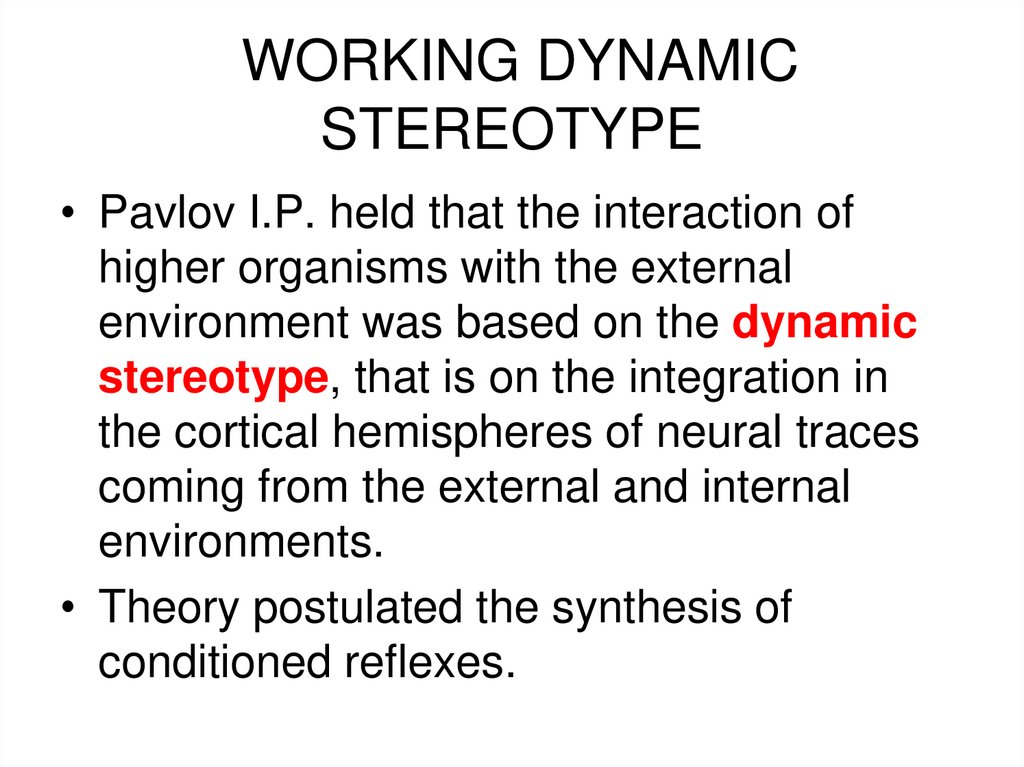


















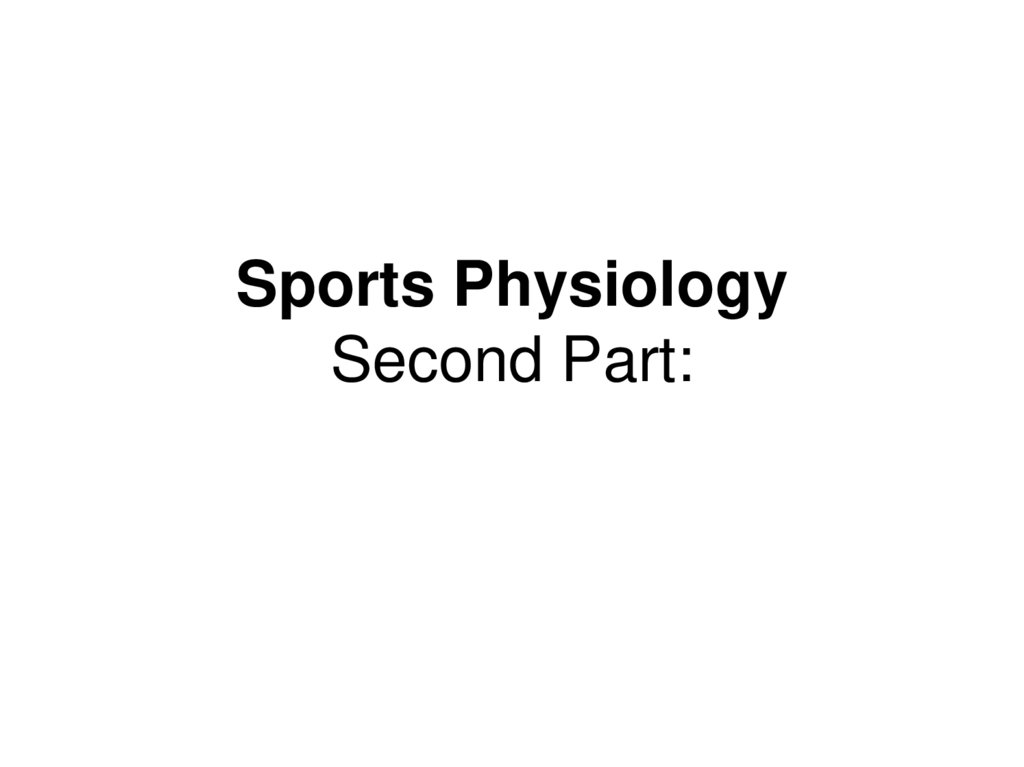


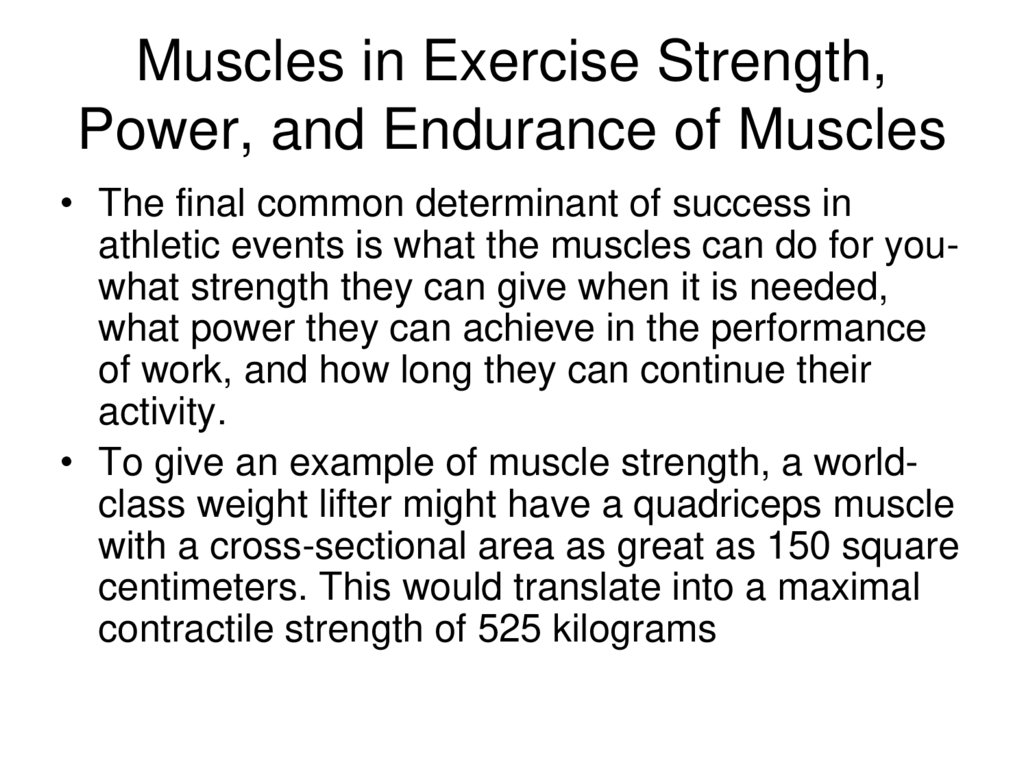



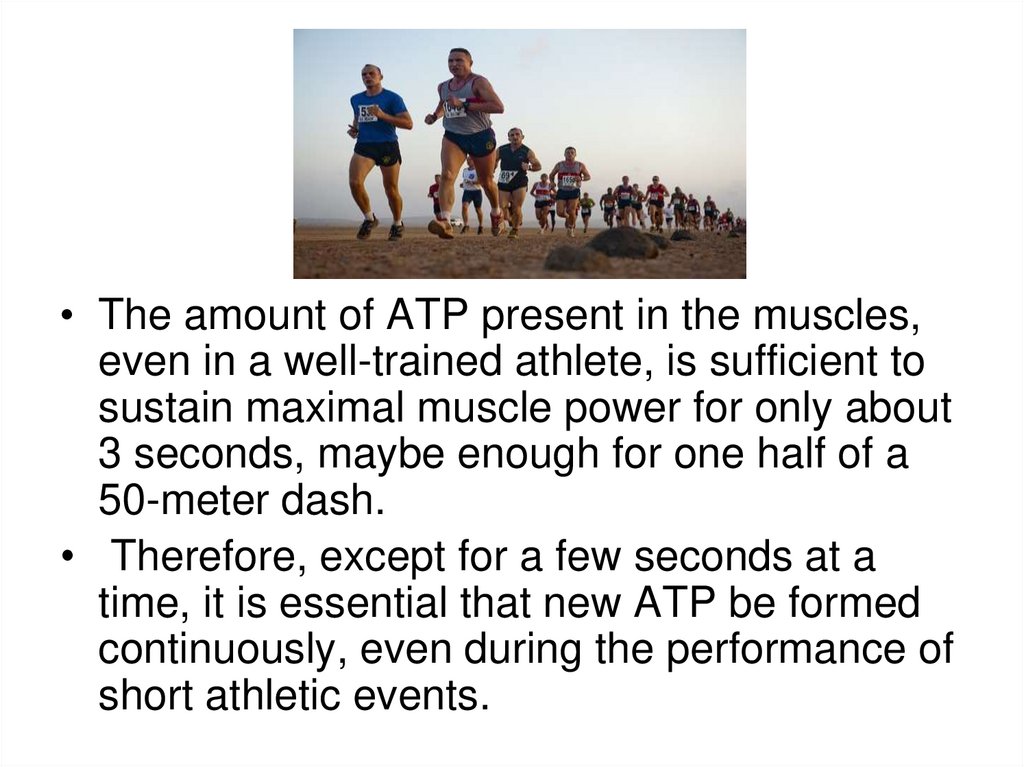


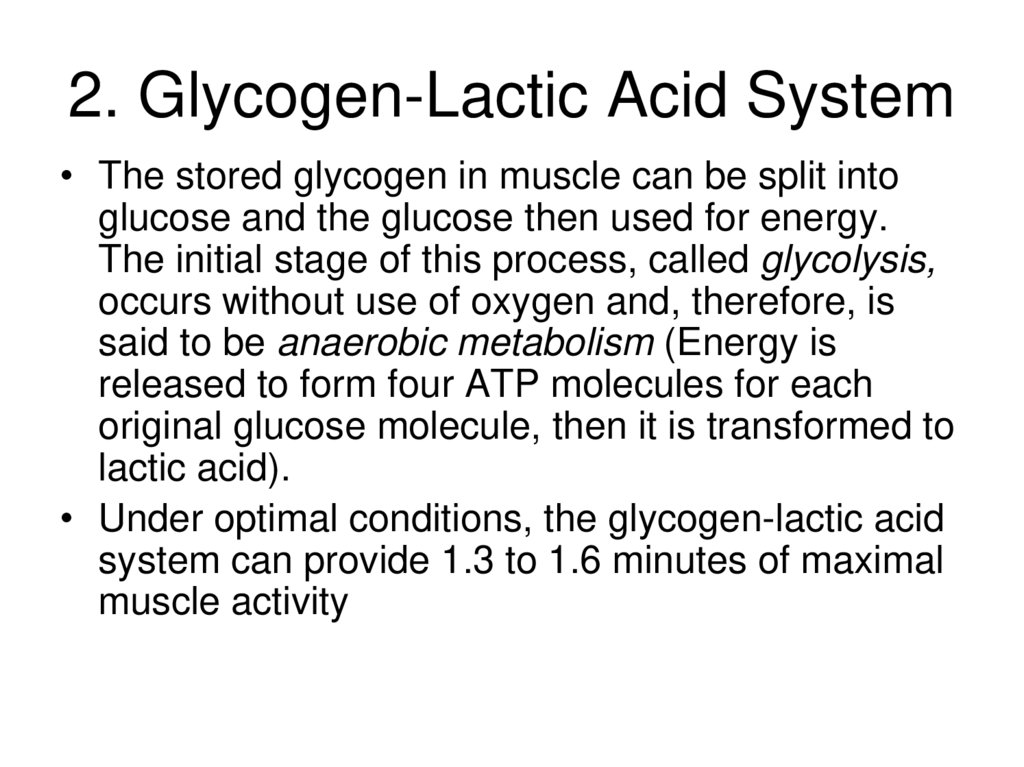










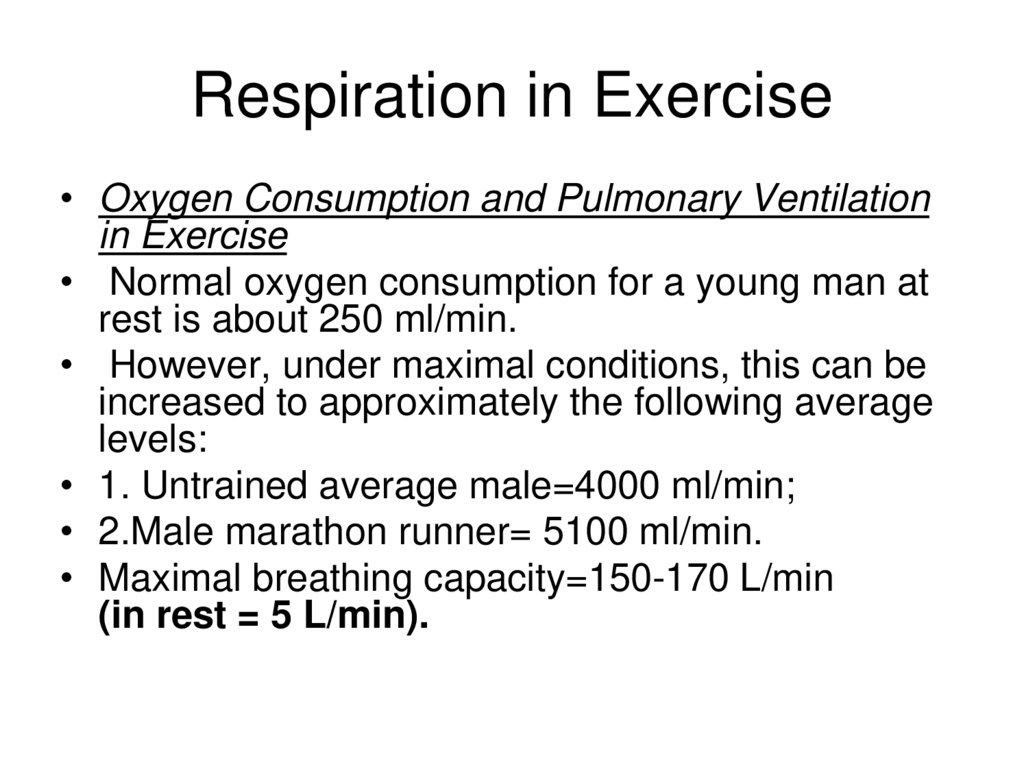
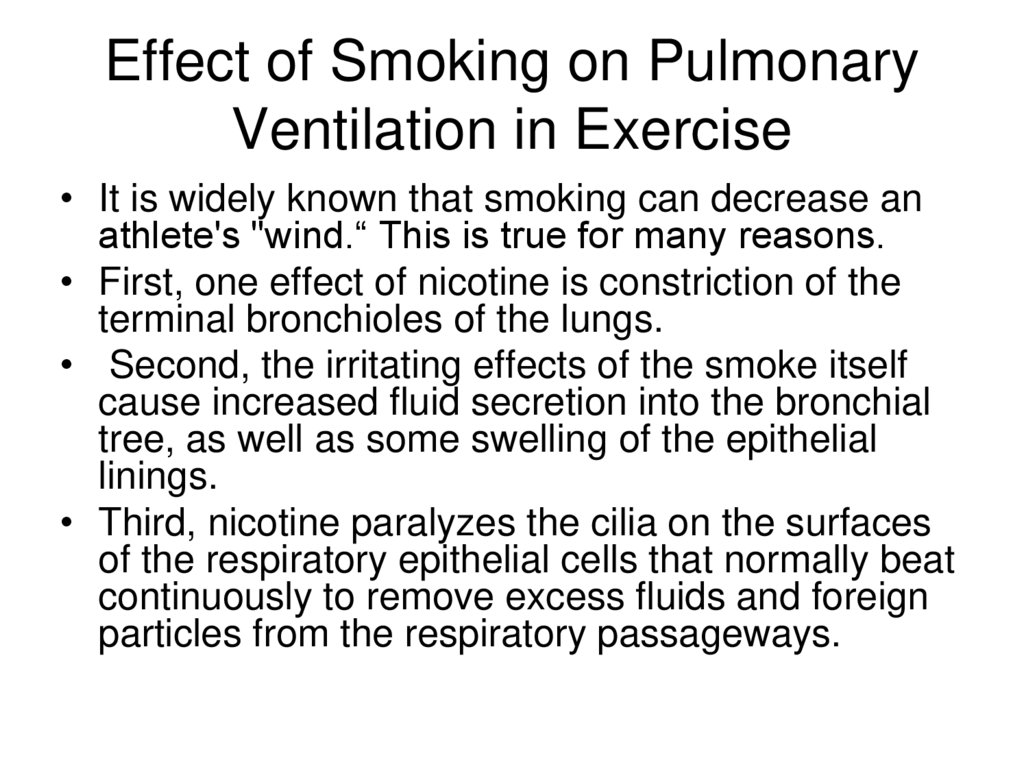




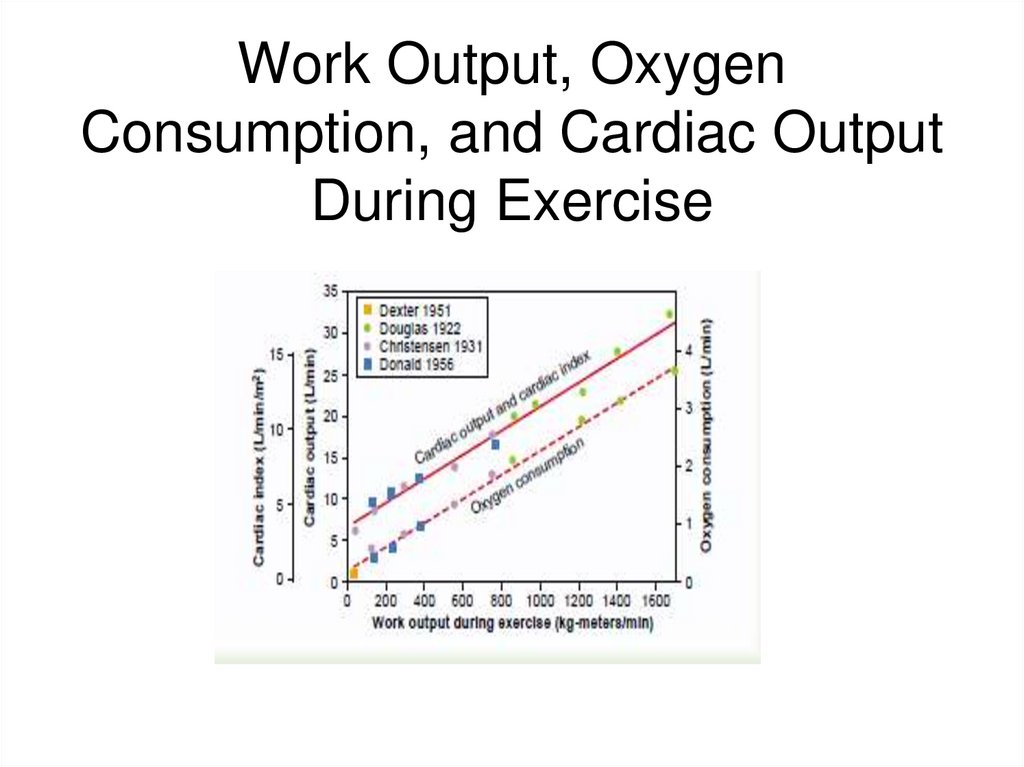
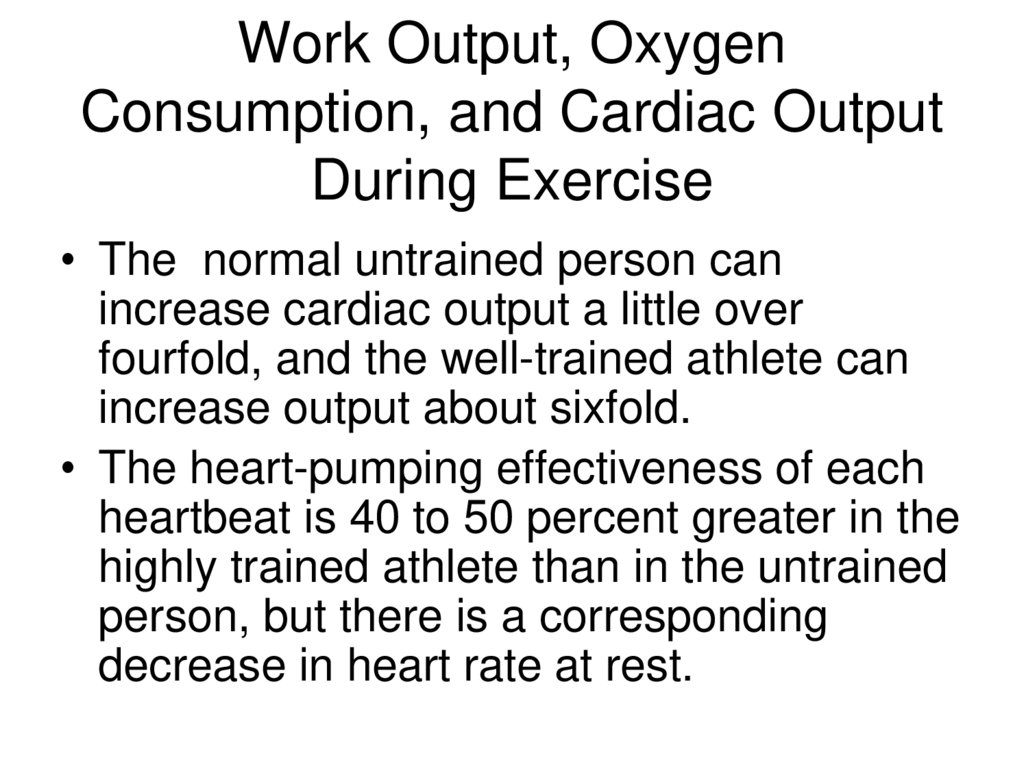






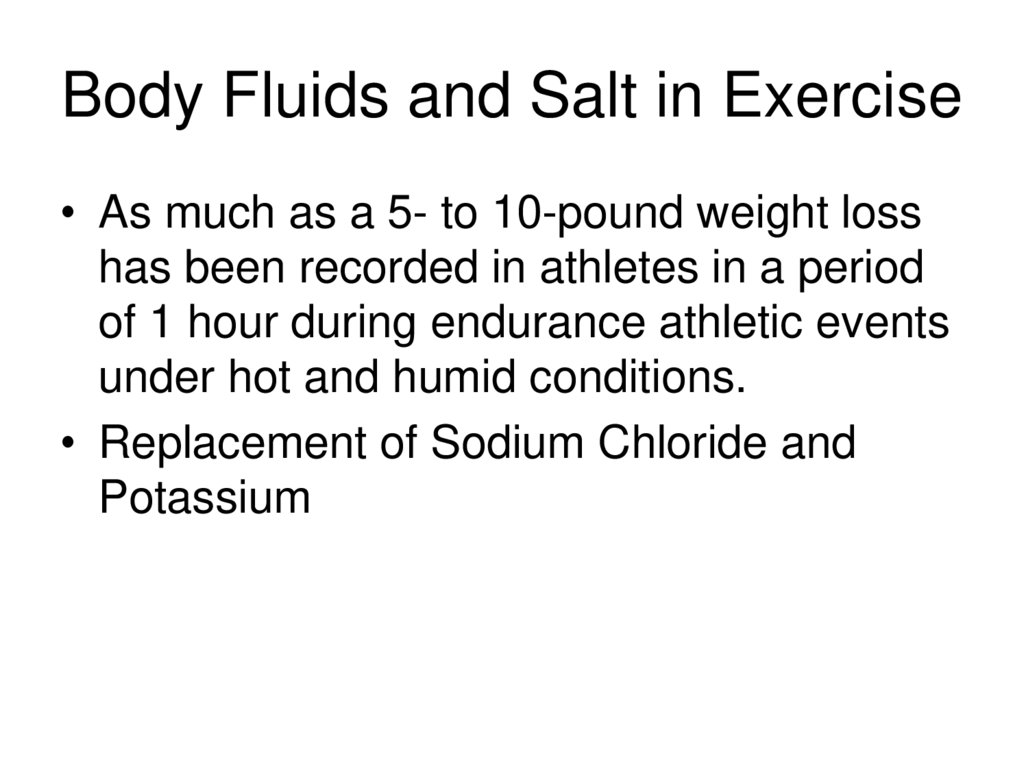


 medicine
medicine biology
biology sport
sport








